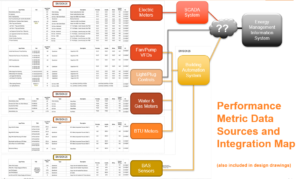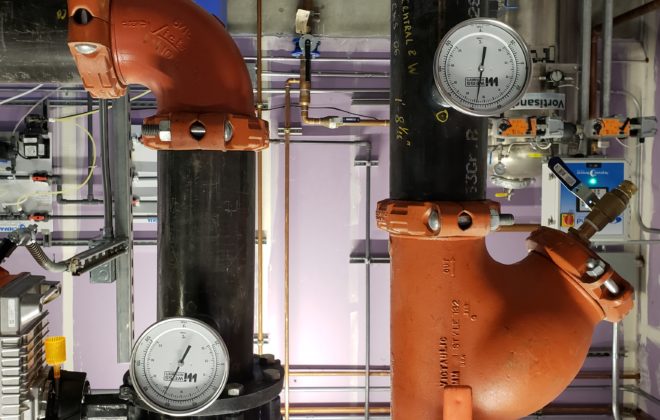
The North Star of Ongoing Commissioning: Start with the OPR!

I just completed a presentation for the BCXA 2020 Conference with Chris Weyandt, Ongoing Commissioning Leader, at Lawrence Berkeley National Laboratories (LBNL), on “Why Ongoing Commissioning is necessary.” During the Q&A session, a very important question was posed that I think needs to be discussed; “Is the Owner’s Project Requirement (OPR) a key document for Ongoing Commissioning (OCx) success?”
The answer is absolute, YES! The truth is that CLEAR and REAL Performance Metrics are a must for the achievement of actual building performance, and that starts with the OPR. The OPR should state the project’s goals and be used as a roadmap to guide the project to success. It needs to be created in the early design phase and used as the “north star” for designers, contractors, commissioning agents, facility engineers, and even occupants. Without key performance indicators (KPIs), the OPR is just a narrative that never gets looked at after design. LBNL is fortunate to have strong leadership that understands the value of KPIs. For a recently completed project on LBNL’s campus, the Integrative Genomics Building, LBNL’s Chief Sustainability Officer John Elliott helped establish KPIs early in the project and define them as part of the OPR. These served as tangible goals the design team could work toward.
Why are Key Performance Indicators (KPIs) necessary?
Simply put, “You can’t manage what you can’t measure.” Peter Drucker. How do you know whether you are successful unless success is defined, measured, and tracked? KPIs can be really anything that the owner finds of value. For example, air quality can be measured and may be important to the owner because it correlates with employee attendance and productivity (https://pubmed.ncbi.nlm.nih.gov/15330777/). Because each building and business is different, it is important to define these metrics specifically for your project.
- You need to define KPIs early, so that design and implementation are working toward those goals.
- You need to know what tools, meters, software, etc. you might need to measure your KPIs.
- You need to determine how and where your metrics will be displayed so they are easy to access, understand and utilize. For example, having PV production in a cloud software and then having building energy consumption data in another location like the BMS… not ideal or easy!
- You need to ensure the metrics get into the design documents with enough detail for proper installation.
- You need to define requirements for testing and commissioning to ensure the devices are providing ACCURATE data!
Why don’t Key Performance Indicators get defined in design?
The OPR is the owner’s document and is intended to be written to establish and reflect their goals. However, most owners have never seen this document before, let alone have no idea how to complete it. This often results in someone else creating this document and a document lacking real, clear and project specific KPIs. Although, I do not have a perfect solution, I think there are steps we can take for needed improvement.
- Owner’s need to know they can seek the advice and help from their consulting team for the creation of KPIs, though they need to stay invested to ensure the KPIs actually emulate their intention.
- Design consultants need to help to provide real KPIs that can be measured, no more generic statements around energy performance.
- Designer’s play an important role in making KPIs clear in design documents. If I need “Kw” from a variable frequency drive on a fan, we should specify that point, not necessarily all 40 points that are available via Bacnet.
- Facility engineers and/or staff who will be tracking the metrics, should be engaged in the creation and presentation of the KPIs.
What is a Real Key Performance Indicator?
How many times have you seen an OPR with the energy goal stated as “20% better than … ASHRAE 90.1 or California Title 24 Energy Code”? This is not a real KPI. It is not distinct or verifiable. One of the reasons I like commissioning Zero Net Energy (ZNE) projects is because the target is understood by all parties: owners, engineers, contractors, facility engineers and the occupants. The clarity of the metric tends to engage everyone more. People want to know where we are and if we are on track each step of the way. You don’t have to be a ZNE project to do this; you just need to have KPIs you can actually measure and then communicate them to all vested parties.
How do you make Key Performance Indicator Clear?
Defining KPIs is no easy task and implementing them may even be harder. Buildings are more complex than ever, from the innovative designs to the controls integration of many systems. This makes it imperative for those KPIs to be clear. Let me illustrate a great example from the Integrative Genomics Building. The chart below shows not only the metric but also some essential information such as units for metric, specific input points, actual formula to calculate the metric, and the expected target for each metric.
This chart was also included in the design drawings, which is very rare in my experience. By including it in the drawings, it placed the KPIs front and center so that everyone is aware and had clear direction!
This is something that could be turned over to an owner or facility engineer and they would understand what the metric is and how it was calculated.
An additional drawing went even further to clarify what Labor Division was responsible and which devices and systems the information would flow to (click image on the right to expand).
Ongoing commissioning is defined as a continuous process using data to evaluate and optimize building performance. Developing tailored and focused KPIs can have a significant impact on your return on investment, through energy savings, reduction of maintenance costs, improved productivity, positive occupant thermal comfort just to name a few. Yet, to be successful you have to be able to measure, track, understand, analyze, and take action on this data. The OPR is that document that creates the roadmap for what to measure!






